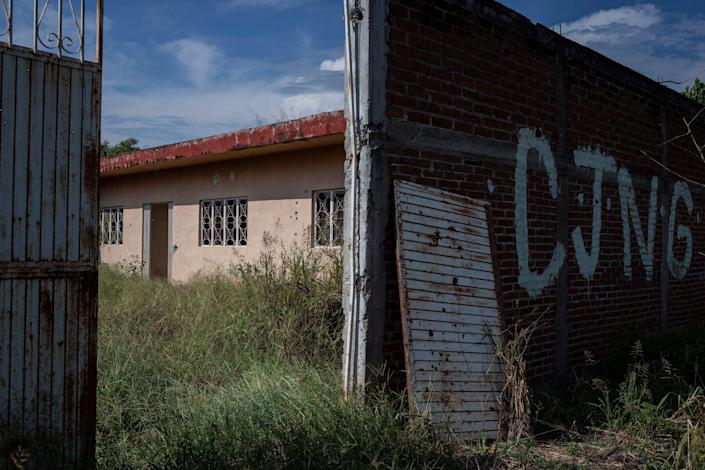Cartel violence in Mexico forces people to flee their homes, leaving ghost towns behind.
EL CAJÓN, MICHOACAN, Mexico —Two years ago, more than 100 people lived in this small village in Mexico’s western state of Michoacán.
Now, there are only eight.
A local feast celebrating Saint Michael the Archangel, patron saint of the town, used to run for two days, with heaps of food and celebratory banda, regional Mexican music. There is no feast this year — only three men dressing up a statue of the saint between cleaning a church.
El Cajón is one of the hundreds of villages transformed into ghost towns by crime and violence that force people to flee, either to other parts of the country or to the United States. The village has around 60 abandoned houses riddled with bullet holes, surrounded by grass and forgotten belongings. People left everything behind after brutal attacks by Mexican drug cartels.

According to the Internal Displacement Monitoring Center in Mexico, there were 9,700 new displacements due to conflict in 2020, bringing the total count of people displaced within Mexico to 357,000 people as of last December. About 24,000 displaced migrants, most from Michoacán, are expected to go to Tijuana to pursue asylum in the United States, according to recent coverage from the news organization Border Report.
“Over the past two decades, the ways criminal groups exercise violence, and against whom, have changed profoundly in Mexico,” said Falko Ernst, a senior security analyst for the International Crisis Group responsible for conducting research on the country’s lethal conflict. “Criminal groups have moved toward deep territorial penetration. They’re seeking to control not only the land but also populations.”
Strategically speaking, Ernst said, criminal groups clearly recognize how essential it is to get local civilians on their side.
Sometimes, they try to entice people with displays of benevolence like handouts.
But more often, they threaten people with coercion and violence.

CLICK HERE FOR FULL ARTICLE ON COURIER JOURNAL
TYT Newsroom


